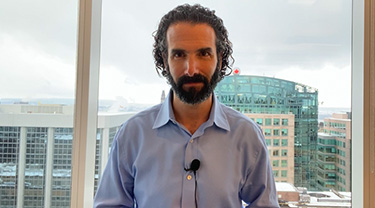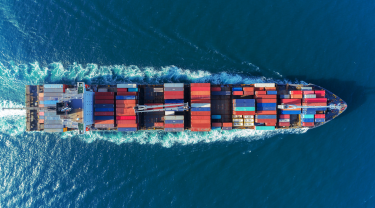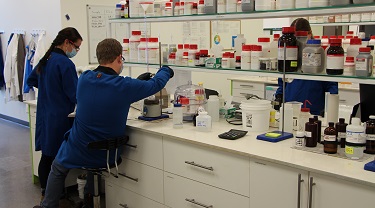As we close out 2022, the turn of the calendar page brings a pause for reflection and a look ahead, as if the completion of the Earth’s orbital journey somehow implies a reshuffling of the cosmic deck. In that spirit, EDC Economics has joined the fray with a look at some of the predominant themes of the past year, and what they mean for 2023.
Inflation at a 40-year high. War in Europe. A shutdown of the world’s factory. And all this as we struggle to recover from the spread of a global pandemic. To say that 2022 hasn’t quite played out the way many of us thought, would be an understatement. The preponderance of “unprecedenteds” raises questions around whether we’re living in increasingly uncertain times. The Global Economic Policy Uncertainty Index reveals that uncertainty is even higher than during the 2008 Global Financial Crisis. The VIX Index, the Chicago Board Options Exchange’s famed volatility gauge, has swung from a low of 16 to a high of 39.
Global inflationary pressures, driven primarily by food and energy prices, have been an overarching obsession this year. Although falling back, price increases will remain above their target range in 2023 forcing key central banks to stay the course for much of the year. The situation in Europe is a bit trickier. The Russia-Ukraine war continues to threaten food and energy security, and the European Central Bank will need to more delicately balance the inflationary impacts against any impacts on growth and confidence.
You should also check out
Look back at the challenges Canadian companies faced in 2022 and ahead at the emerging risks for 2023.
Adding to the challenge, labour markets have remained surprisingly resilient, and job vacancies are at record highs in many countries. In Canada, vacancies reached the one-million mark, with more jobs available than unemployed. This dynamic is driving wage gains and will force central banks to guard against a potential wage-price spiral.
2022 saw the beginning of the end of cheap money, with about 90% of the world’s central banks raising rates, in what’s been the steepest hiking cycle in more than 40 years. With inflation still high (but clearly falling), and unemployment still low (but expected to rise), there are questions around whether central banks can manufacture that fabled “soft landing,” especially when you consider that interest rate moves take about a year to work their way through the system.
Traditional recessionary indicators are flashing red, and the International Monetary Fund expects about a third of countries to be in a recession over the next year. Call it what you will, but many countries are in for a period of below-trend growth, as fiscal and monetary authorities rebuild their arsenals to protect against future downturns. A reopening in China is a rare upside risk for the global economy.
As central banks hike rates and reduce their balance sheets, financial assets will face both higher discount rates and reduced demand. The bull market run fuelling equity gains appears to be over, and financial markets have grown increasingly sensitive to economic data releases and any sign of liquidity strain. Resulting U.S. dollar strength is also pressuring emerging markets, with 14 sovereigns on J.P. Morgan’s Emerging Market Bond Index (EMBI) posting spreads above 1,000 basis points, compared to only five in 2019.
Risk differentiation is back with a vengeance, with the ratio of rating upgrades to downgrades turning over and the return of market discipline expected to be a theme next year. Better regulated financial institutions and strengthened U.S. household balance sheets, an important legacy of 2008, is a key offset to any potential for contagion.
Heightened trade tensions have led to predictions of a reversal of globalization, a usual refrain anytime the global economy hits a soft patch. While geopolitical risk, fractured commercial ties and the rise in populist economic agendas are gaining traction, as long as half the world has what the other half is willing to pay for be it—labour, resources or safe assets—true decoupling remains elusive. More likely, globalization is in for a period of maturation, with supply chain efficiency expected to cede ground to supply chain resiliency as a key corporate objective. This will usher in an era of new supply chain risk management practices, the development of new logistics technologies and increased regional integration.
The bottom line?
With one more swing around the sun, businesses, investors and pundits are reflecting on the year gone by and offering insights on what’s to come. The global economy has its work cut out. Growth will slow and the risks are high. But thinking through the scenarios and planning around the “what-ifs” will give you the competitive edge to not only meet the challenges, but take advantage of the opportunities that no doubt lie ahead.
EDC Economics will release its updated Global Economic Outlook on Jan. 12, 2023.
This week, a very special thanks to Andrew DiCapua, analyst in EDC’s Research & Analysis Department.
As always, at EDC Economics, we value your feedback. If you have ideas for topics that you would like us to explore, please email us at economics@edc.ca and we’ll do our best to cover them.
On behalf of all of us at EDC Economics, wishing you the best for the holiday season and a very happy and healthy 2023!
This commentary is presented for informational purposes only. It’s not intended to be a comprehensive or detailed statement on any subject and no representations or warranties, express or implied, are made as to its accuracy, timeliness or completeness. Nothing in this commentary is intended to provide financial, legal, accounting or tax advice nor should it be relied upon. EDC nor the author is liable whatsoever for any loss or damage caused by, or resulting from, any use of or any inaccuracies, errors or omissions in the information provided.







